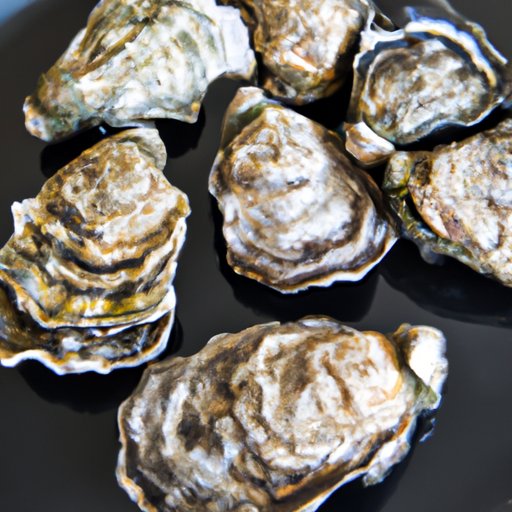Introduction
Raw oysters are a delicacy enjoyed by many seafood lovers around the world, but have you ever wondered if they are truly alive when you eat them? In this article, we will explore the science, history, and nutritional benefits of consuming raw oysters while also debunking common myths and misconceptions.
So, grab a bib, prepare some cocktail sauce or mignonette, and let’s dive into the fascinating world of raw oysters.
The Science of Raw Oysters
Oysters are bivalve mollusks that live in saltwater environments around the world. They have a unique ability to survive outside of water for several days due to their ability to close their shells tightly and retain moisture inside.
When you eat a raw oyster, it is still technically alive due to the presence of adductor muscles that allow it to open and close its shell. However, due to the absence of a brain or central nervous system, the oyster is not capable of feeling pain or experiencing emotions.
While the idea of consuming a living creature may be unsettling to some, rest assured that oysters are safe to eat when properly harvested and stored.
The History and Culture of Raw Oysters
Humans have been consuming oysters for thousands of years, with evidence of oyster consumption dating back to ancient Rome and Greece. Oysters were also a staple food for Indigenous communities in North America long before the arrival of Europeans.
In addition to their long history, raw oysters hold significant cultural value in various parts of the world. In France, the Belon oyster is considered a delicacy that is protected by law. In the United States, oyster roasts are a popular social event in many coastal communities.
The debate over whether or not raw oysters should be considered alive has been ongoing for many years. While some argue that the act of consuming a living creature is unethical, others contend that oysters are a sustainable and healthy food source when harvested responsibly.
The Nutritional Benefits of Raw Oysters
Raw oysters are a nutrient-dense food that are a rich source of vitamins and minerals such as zinc, iron, and vitamin B12. Zinc, in particular, is found in high concentrations in oysters and has been linked to improved immunity, wound healing, and fertility.
In addition to their vitamin and mineral content, raw oysters are also a good source of omega-3 fatty acids, which are beneficial for heart health and brain function. Studies have also shown that consuming raw oysters may reduce the risk of developing certain types of cancer.
The Sustainability and Environmental Impact of Oysters
Oyster farming has been shown to have a positive impact on water quality and the environment. Cultivated oysters filter water, removing excess nutrients and pollutants, and promote the growth of healthy aquatic ecosystems.
Compared to other seafood options, oysters have a lower carbon footprint and require minimal resources to cultivate. Sustainable oyster farming practices, such as using recycled shell material and implementing responsible harvesting methods, can further reduce the environmental impact of oyster production.
Debunking Myths and Urban Legends
Despite their many benefits, raw oysters have been the subject of numerous myths and urban legends over the years. One such myth is that eating oysters during months without an “R” in the name (May through August) can lead to illness.
However, this myth has been debunked, and regulatory measures are in place to ensure that oysters are safe to consume year-round. Another common misconception is that oysters are an aphrodisiac, though there is little scientific evidence to support this claim.
While proper handling and cooking methods should always be followed when consuming any seafood, raw oysters are a safe and nutritious food choice when sourced and prepared responsibly.
Conclusion
In summary, raw oysters are a fascinating and delicious food that hold both cultural and nutritional value. While some may find the concept of eating a living creature unsettling, oysters are safe to consume and can provide numerous health benefits when sourced and prepared responsibly.
Ultimately, whether you enjoy them on the half-shell, in a flavorful stew, or baked with cheese and breadcrumbs, raw oysters are a unique and rewarding culinary experience that seafood lovers should not miss out on.
(Note: Is this article not meeting your expectations? Do you have knowledge or insights to share? Unlock new opportunities and expand your reach by joining our authors team. Click Registration to join us and share your expertise with our readers.)
